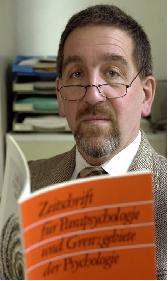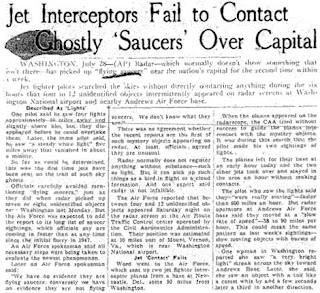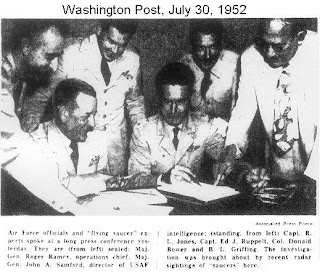MPI four phases and pragmatic information
The MPI is based on the notion that psi effects are fundamentally manipulations of information through a pragmatic (or meaningful) intent by ways of what quantum physics calls “non-locality”. Pragmatic information is modified within two or more systems (which can be a person, an object, a weather pattern, etc) simultaneously without having any observable cause-and-effect (i.e. non-locality). In the case of paranormal events, the information can be expressed as either Extra Sensorial Perception (ESP) (precognition, telepathy, remote-viewing, etc.) or as Psychokinesis (PK) (telekinesis, apparitions, imprinting, etc.). In the particular case of PK effects, the concept of information means that matter’s shape or motion is actually information. Such information can be modified by physical means in a normal context (e.g. pushing a ball), or by non-physical psi means in a paranormal context.[1]
The notion of psi as information is quite useful to explain one of the key findings of scientific parapsychology: psi phenomena are inherently elusive. This may sound banal, but this has important consequences for researching and understanding psi effects. In short, what it means is that for a system to be modified through psi means there must be enough indeterminacy in it so that non-normal (or non-deterministic) outcomes can occur. To fully appreciate this issue, it needs to be decomposed further.
Information is not something static, and it is something that is fully reflexive. Those who create information modify information around them as well. This notion is called in quantum physics “preparing a system”. Quantum physics is now fully aware that just looking into a system is actually putting information into such a system.[2] The most common example in physics is that if an experiment is set to look into light and assumes that light is made of particles, then the light will behave as particles as a result of experimentation. Conversely, if the experiment is based on the notion that light is made of wavelength then the system will be observed as wavelengths. Such a process is called in quantum physics “preparing” a system, because the way we choose to look at a system prepares it to be a certain way. The same happens in the social sciences. When an anthropologists studies and report on a particular cultural, his/her work modifies such culture by creating a greater awareness of cultural practices among the studied people.
This notion of system preparation is fundamental to understand psi effects. The more intensely a system is observed, the less indeterminacy there will be in it. Observation increases the amount of order in a system through the added information, and therefore the less likely a psi effect is to occur. This explains the fundamental elusiveness of psi. Concretely, this has been observed by many “ghost hunters” where something strange usually occurs when the recording equipment is being packed up and people start to talk about other things than the haunting. In the context of scientific parapsychology, this phenomenon has been described by many authors like Owen and Sparrow[3], or Batcheldor[4], where every time that a PK effect occurs the recording system had either a malfunction or was not set properly. The malfunction or improper setting allowed the system to be not “too prepared” (in the quantum physics sense) and thus preserved enough indeterminacy in the system so that the psi effect could occur.
In von Lucadou’s model, it is described as a relationship between “Novelty” and “Confirmation.” A psi effect is more likely to continue to occur when it is something new and unanticipated; because of such novelty it makes people looking everywhere and anywhere for an explanation and thus, they do not focus on a particular system (i.e. they do not put a lot of information in indeterminate systems). The more people focus on a particular system to have confirmation that it is a paranormal event, the less likely it will produce a psi effect because by doing so they inject information into it. This is the fundamental elusiveness of psi. To put in von Lucadou’s words, “the system ‘can only behave as it pleases’ as long as one does not observe it with great care.”[5]
The 1952 UFO wave and elusiveness
The overall setting in the United States, in the early 1950s, was certainly one where “novelty” was possible. At that time, the country was the only one paying any attention to the UFO phenomenon through the collection and analysis of UFO sightings (mostly by military personnel), and channelled to a central repository called the Project Blue Book. This situation is perfectly understandable, as it was the only country at that time that appeared to experience an ongoing UFO phenomenon, an issue explicitly stated in 1948.[6] Yet, as it was underlined by so many ufologists, up to the 1952 Washington D.C. UFO incidents, the U.S. military was paying only scant attention to UFOs. In other words, they were able to observe the system, but they were not collectively really paying attention to it. Such are the key conditions for a psi effect to occur, according to the MPI.
The Washington D.C. incidents are full of examples of phenomena ceasing when confirmation became possible. For instance:
(1) In the night of 19-20 July 1952, around midnight, the airman William Brady at Andrew AFB saw the orange lights in the sky. He called his co-workers to have a look. When they arrived the balls were gone.
(2) On 20 July, around 3:00 am, as soon as the F-94 jet fighters could be seen on the ground radar screens, the objects immediately vanished from the radar screens. This scenario will be repeated a number of times during the night of 26-27 July.
(3) On the night of 26-27 July, F-94 fighter jets lost the objects from their on board combat radar as soon as they were able to get a lock-on.
(4) On both the 20 and 27 July, the objects disappeared as soon as there was enough sunlight to see them distinctly.[7]

Such elusiveness is very often interpreted as a sign of “intelligent” control, and thus many deducted that UFOs must be spaceships from another world. A similar deductive process occurs in RSPKs and hauntings cases where an evil spirit or the soul of a deceased person is “accused” of being behind the phenomenon. However, in light of the MPI, we, the living human beings on Earth, are the source of such apparent intelligence by reducing or increasing the indeterminacy within a phenomenon depending if we focus or not on it.
The attribution of the phenomenon’s cause to a particular agent (e.g. extraterrestrials) is necessary for the phenomenon to continue occurring, and that’s why von Lucadou calls the second phase “displacement”. If there is no displacement towards a presumed a particular agent, then the phenomenon would end right there. In 1952, the phenomenon was able to continue between the initial surprises of 19-20 July because the phenomenon was displaced through the press into a belief that “flying saucers” were observed, although the civilian and military aviation personnel did not appear to consider such possibility as a valid one. What this means is that by becoming an unexplainable phenomenon (i.e. flying saucers in this case, or an evil spirit in the case of RSPK) people’s look is being displaced to something else than the system at play, and therefore the indeterminacy can continue to be.
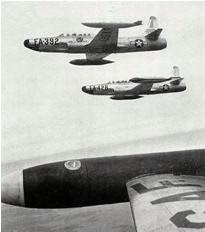
Here it is also crucial to note that as people are looking at everything and nothing in particular through the notion of “flying saucers” (or evil spirit in the case of RSPK), there are usually a number of false calls that get in the picture. As well, it is oftentimes an implicit invitation for pranksters to get involved as people are more open, for a short time, to various interpretations including incredible ones. In any macro psi event (including UFO waves), the notion of frauds, hoaxes, misperceptions and genuine psi effects should be put on a continuum of information production rather than be considered as distinct categories. This is because they all participate in either maintaining or reducing the indeterminacy in the system at play.
Going back to the 1952 Washington D.C. incidents, it is quite possible that misperceptions and temperature inversions produced information that was interpreted as “flying saucers”. The fact that these sources had nothing paranormal is not that important in the context of MPI, they contributed to reinforce the displacement towards “flying saucers,” for a while, and therefore continued to maintain indeterminacy in the system at play.
It is needless to say that after the night of 26-27 July, with press coverage that ensued, as well as President Truman asking what was going on, the civilian and military aviation personnel were on the high alert to figure out what was going on. As well, with the official explanation of temperature inversions given on 29 July, the system was observed as such, and the findings where corroborated that indeed there was a lot of temperature inversions. In other words, from that point on the system was prepared for a high degree of confirmation, and it is not surprising that it was at that very time the psi effects started to decline.
The suppression phase injects an even higher degree of information in the system, as it is formally defined by those who have authority and power as something inconsequential (e.g. temperature inversion, dreams and misperceptions, etc.). It is also important to note that modern societies tend to follow through with most official explanations, which injects even more information in the system at play. In the case of the 1952 events, it is difficult to know if the recommendations of the Robertson panel were really followed, but it was certainly a good indication of the mindset at the time. Once again, such suppression is not a matter of the people in position of authority hiding a terrible secret, but rather hiding their incapacity to deal with such phenomena. There is nothing unusual about this, as “impression management” is a key feature of any modern bureaucracy. Anyone who worked in a governmental policy-related position or any student in Public Administration or Government Studies knows that. The best example of that is the once classified and so-called “Pentacle” memorandum of January 1953, written in preparation of the standing up of the Robertson Panel, (and Ruppelt was one of the addresses), calling for establishing a large network of UFO surveillance.[8] Anyone who had any experience of writing for government can see that this memo was written by or for someone who was desperately looking for an answer and who was most likely under a lot of pressure from his superiors to deliver. The proposals found in this memo clearly show that information about UFOs should be curtailed from the general public, but also show that they did not know what UFO were.
The MPI phases and people
RSPKs are caused by people who unconsciously use psi to convey pragmatic information, or a message, to their environment; to draw attention to themselves and their problems. The typical RSPK is caused by a person (called the focus person) that has a lot of anger but cannot express it for various psychological reasons, and the paranormal means become an alternate but unconscious way of communicating with their social environment. As discussed above, the interaction with people in the environment (whether they put information in the system or not) will determine how long the phenomenon will continue. Hence, the focus person should not be considered as the sole cause of the phenomenon. As well, the focus person oftentimes does not realise in the early phases that he or she has something to do with it because it is caused by unconscious mental processes. There are other RSPKs where “the focus person seems to be much more passive, for instance, it is very often a person who suffers from depression and is not able to control anything in his or her life and also not in her environment. This in contrast to the active RSPK focus person where one gets the impression of a boiling pot, which is ready to explode, and the phenomena are just the sign of an ‘explosion.’ With the passive ones the opposite is the case.[9]
Whether the RSPK is caused by an active or passive focus person, there is always a similar cast of people in a RSPK.

Von Lucadou’s chart of the social organization of RSPKs [10]
The Environment is made of the people immediately around the focus person like the family, co-workers, neighbours, etc, and they allow the system to maintain its indeterminacy during the surprise phase. The Naive observers category is made of psychics, mediums and self-appointed parapsychologists who “come to the rescue”, as well as sensationalist journalists, and by displacing the interpretation of the phenomenon they allow the system to remain indeterminate during the displacement phase. The Critical observers category is made of various sceptics, professional parapsychologists, public health officials, etc, who by seeking confirmation reduce the indeterminacy in the system during the decline phase. Finally, the Society is made of those in position of authority and the rest of the society judging the situation usually through the “serious” press, and removes any indeterminacy left in the system during the suppression phase.
In the case of the 1952 UFO wave, the Environment can be clearly identified as the civilian and military aviation personnel, as well as flight crews of civilian jet liners and military fighter pilots. They were key figures in the surprise phase.
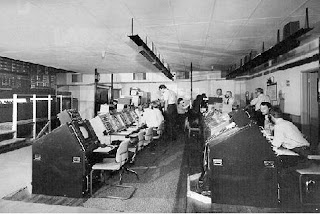
The Naive observers were the journalists that congregated in the radar room, and probably the many “saucer enthusiasts” who read the news clipping after the first incident of 19-20 July. They were the key actors during the displacement phase.
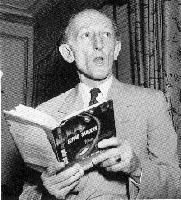
The Critical observers were the members of the Project Blue Book, Edward Ruppelt in particular, and other technical military personnel represented at the 29 July press conference. Their intervention was linked directly to the beginning of the decline phase.
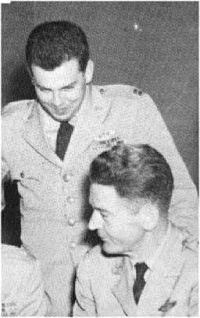
The Society was the public, who read the “debunking” news about the Washington D.C. incidents, and the people represented on the Robertson Panel, and they were the central actors of the suppression phase.
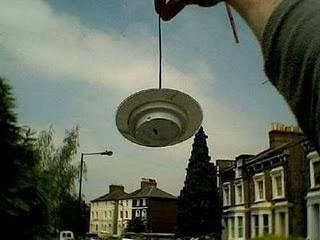
What is missing, however, is a clearly identifiable focus person(s) that could help us understanding why a major UFO incident occurred around Washington D.C. in July 1952, and what was the meaning behind it (i.e. what was the content of the pragmatic information). Uncovering who were the focus persons will be the aim of the third and last part of this case study.
References for part 2
[1] For more information on the quantum/information theories of psi in parapsychology, please refer to Radin, Dean. Entangled Minds: Extrasensory experiences in a quantum reality. New York: Paraview, 2006, pp. 250-266.
[2] For more on this please refer to Rosenblum, Bruce and Fred Kuttner. (2006). Quantum Enigma: Physics encounters consciousness. Oxford: Oxford University Press.
[3] Owen, Iris M. and M. Sparrow. (1976). Conjuring up Philip: An Adventure In Psychokinesis. Harper & Row.
[4] Batcheldor, Kenneth J. (1984). “Contributions to the theory of PK induction from sitter-group work”. Journal of the American Society for Psychical Research 78(2): 105-122.
[5] Lucadou, Walter von and F. Zahradnik. (2004). “Predictions of the Model of Pragmatic Information about RSPK”. Proceedings of the Parapsychological Association Convention 2004 (99-112), p. 106.
[6] Lipp Report in Steiger, Brad. (1976) Project Blue Book. New York: Ballantine Books, p. 213.
[7] Examples drawn from Randle, Kevin D. (2001). Invasion Washington: UFOs over the Capitol. New York: Harper Collins, pp. 32-74.
[8] A copy of this memorandum and an explanation of the context in which it emerged can be found on the CUFON’s website on Internet at http://www.cufon.org/cufon/pentacle.htm
[9] Lucadou, Walter von and F. Zahradnik. (2004). “Predictions of the Model of Pragmatic Information about RSPK”. Proceedings of the Parapsychological Association Convention 2004 (99-112), p. 110.
[10] Ibid., p. 102.
Eric Ouellet © 2009
